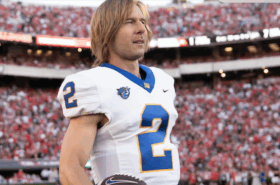
 2024 is the year for advertisers to capitalize on the growing momentum of women’s sports, unlocking untapped potential and maximizing spend in a rapidly expanding market. Natasha Sinagoga, VP of Local Sales at Ampersand, offers her insights on the opportunities for marketers who want to play ball.
2024 is the year for advertisers to capitalize on the growing momentum of women’s sports, unlocking untapped potential and maximizing spend in a rapidly expanding market. Natasha Sinagoga, VP of Local Sales at Ampersand, offers her insights on the opportunities for marketers who want to play ball.As the spotlight intensifies on women’s sports, the opportunity for advertisers to capitalize on this growth is immense, yet it remains largely untapped. In 2024, women’s sports are experiencing unprecedented momentum, marked by record-breaking achievements, increased viewership, and significant milestones in media coverage. From the electrifying performances at the NCAA Women’s Basketball finals to the commanding presence of female athletes at the 2024 Paris Olympics, where 65% of Team USA’s gold medals were won by women, the message is clear: this is the year of female athletes.
From Margins to Mainstream: Capitalizing on Unutilized Potential
Once sidelined in favor of male counterparts, women’s sports are now gaining the attention they deserve. Just look at the one fashion statement that stood out among the 2024 Olympics crowd: the viral “Everyone Watches Women’s Sports” t-shirt. Worn by athletes, fans, and even celebrities, the shirt became a symbol of the growing visibility and support for female athletes on the global stage.
However, despite the rapid growth in visibility and media coverage, the revenue generated by women’s sports still lags significantly behind that of men’s sports. The surge in women’s sports revenue, while impressive, is starting from a modest base. It’s a hockey stick type of growth, but it’s coming from almost nothing, underscoring the need for more substantial investment to bridge this gap.
Currently, only 33 companies in the Fortune 500 have sponsorship deals with leagues like the WNBA, NWSL, and PWHL, a mere 6% compared to the 20% of Fortune 500 companies sponsoring men’s sports leagues. Top spenders on men’s March Madness spend 90% less on the women’s tournament, This disparity highlights the vast untapped potential within women’s sports advertising.
The Shift in Upfronts: Women’s Sports Take Center Stage
The shift in the advertising industry’s approach to women’s sports is perhaps best exemplified by the changes in this year’s Upfronts. Historically, women’s sports were bundled with men’s sports, often as an afterthought. However, in 2024, women’s sports are receiving standalone attention for the first time, reflecting their growing significance in the media landscape. The numbers warrant it.
The 2023 NCAA Women’s Basketball Tournament drew nearly 10 million viewers for the final game between Iowa and LSU—a staggering 103% increase from the previous year. The momentum continued in 2024, with the Women’s NCAA Tournament averaging nearly 19 million viewers and peaking at 24 million for the final game between Iowa and South Carolina, marking an 89% increase and surpassing the viewership of the Men’s final for the first time in history.
The WNBA has seen a similar surge in interest. The WNBA Draft audience grew by 42% between 2022 and 2023, with an 89% increase among female viewers. The 2024 WNBA Draft audience skyrocketed by 511%, with a remarkable 668% increase among female viewers ages 2-17. Overall interest in the WNBA grew by 29% between 2023 and 2024.
In soccer, the Women’s Super League experienced an 81% increase in interest from 2022 to 2023. This year, excitement for the Women’s World Cup has reached new heights, with 41% of the global population expressing interest, up from 34% before the 2019 tournament. The tournament also generated $570 million in revenue.
These kinds of numbers mean women’s sports should no longer be seen as a “forced buy” but rather a “must-buy” in any brand’s media strategy. This shift is not just a symbolic victory; it has real financial implications.
Maximizing ROI: Leveraging the Current Momentum
The recent 11-year, $2.2 billion deal signed by the WNBA, up from a previous $60 million per year deal, is a testament to the increasing value placed on women’s sports. Athletes like Caitlin Clark and Angel Reese have been vocal about the need for better representation and investment, and this new deal reflects a recognition of the expanding fan base and the potential for advertisers within women’s sports.
The current moment presents a unique opportunity for brands to maximize their return on investment (ROI). To do so effectively, brands should allocate a dedicated budget and develop a tailored media strategy that resonates with this distinct and growing audience. Brands shouldn’t apply the exact formula they’ve been using for men’s sports—as doing so would overlook the unique characteristics and opportunities present within the female sports viewer.
Brands should consider creating custom content that aligns with the values and aspirations of female athletes and their fans. This could include sponsorships that highlight young women just getting into sports or address themes like body image and empowerment.
Women’s sports can also appeal to a broader, more diverse audience, often blending entertainment with competition. For example, a daughter might appreciate the fashion and style of the athletes or their significant others watching in the stands while her father enjoys the game itself. This inclusive approach allows brands to deepen connections with diverse audiences and create more meaningful engagements.
Moreover, women’s sports offer an ideal platform for non-traditional advertisers, such as makeup and fashion brands, that have traditionally focused on online advertising or struggled to break into pro sports ad buys.
In contrast to the fiercely competitive ad space in men’s sports—evident in Fox’s near sell-out of Super Bowl ad inventory already—women’s sports offer a less cluttered environment where brands can stand out and make a significant impact. First-mover advantage is crucial here; brands that invest early in women’s sports can secure prime placements and build strong associations with this rapidly growing market.
The Road Ahead: Corporate Impact and Beyond
Brands that recognize the long-term value of supporting women’s sports as a means of brand differentiation, consumer loyalty, and sustainable growth may continue to uphold or even increase their investments. Such backing is often associated with female empowerment and gender parity, which further enhances consumer perception and brand reputation.
Investors are already recognizing the growth potential in women’s sports and are strategically positioning themselves to capitalize on it.
Angel City FC, for instance, is thriving under an ownership model that includes a who’s-who of female celebrities, venture capitalists, and retired NWSL players. Washington Capitals star Alex Ovechkin and his wife, Nastya Ovechkina, have invested in the NWSL’s Washington Spirit, while Brittany Mahomes, a founding co-owner of the Kansas City Current, played a key role in the team’s establishment and growth in the area.
Similarly, private equity firms are making significant moves: Sixth Street acquired a majority stake in Bay FC from the NWSL in 2023, Carlyle invested nearly $58 million in Seattle Reign FC in 2024 alongside the ownership group of Seattle Sounders FC, and the Levine Leichtman family set a new record by acquiring the San Diego Wave for $113 million — the largest sale in NWSL history.
Beyond soccer, other sports are receiving similar support. USA Rugby received a $4 million donation from Washington Spirit owner Michele Kang to further develop women’s rugby following the U.S. women’s bronze medal win in the 2024 Olympics.
The future of women’s sports advertising is bright, but it requires bold action from brands willing to capitalize on the current momentum. In today’s fragmented media landscape, where viewers can access content on a multitude of platforms, brands must seize this unique opportunity. The ROI is real, the audience is engaged, and the time to act is now. By doing so, they will play a pivotal role in advancing gender equality in sports and society at large.







